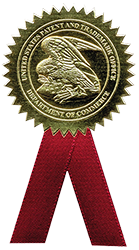Virtual Tour Of LifeLine (VR-360)

LifeCord: Innovative & Awarded Methodology for Cryopreservation of Umbilical Cord Tissue

Innovative and award winning methodology for cryopreservation of Umbilical Cord Tissue, exclusively by Lifeline. Our LifeCord patented by U.S. Patent Office cord tissue methodology offers many advantages.
Lifeline offers cryopreservation services for stem cells that are found in sections of the umbilical cord. Lifeline has developed a unique and innovative methodology for the extraction of stem cells and progenitor cells from umbilical cord tissue and in 2014 the United States Patent Office has granted Lifeline the patent rights for this processing methodology (US Patent Office 8900863B2). This innovation bearing the name LifeCord, is a method for the extraction and storage of 2 types of isolated cells rather than segmented tissue with a mixture of cells. Cells are separated or dissociated from the tissue and cryopreserved.
Lifeline’s Research and Development Department team, in collaboration with British Educational Institutions and a reputable German Research and Biotech Organization, have developed this innovative methodology which is the first methodology worldwide to achieve the dissociation or breaking down of the tissue to extract and isolate the stem cells without the use of any additives such as enzymes. The extraction of individual cells and their cryopreservation by proven traditional methods of cryopreserving cells, offers superior results when compared to other methods whereby small segments of the umbilical cord section are cryopreserved: the efficient method of cryopreserving individual cells results in far better survival results during long term storage and a large viable cell population when these cells are thawed for medical use.
Umbilical Cord Tissue consists of a vascular system and a "glycoprotein mesh" called Wharton's Jelly which is a rich source of Mesenchymal Stem Cells. The vascular system is a good source of Endothelial Progenitor Cells and the LifeCord methodology achieves the separate isolation and cryopreservation of the two cell types as two different products.
LifeCord methodology results in the cryopreservation of a cellular therapy product containing TWO types of cells from the cord tissue:
• The Mesenchymal Stem Cells, derived from the Wharton's Jelly that fills the cord and
• The Endothelial Stem Cells, derived from the cord's Vascular System
Cord tissue is dissociated to obtain individual cells. Individual cells are efficiently prepared for cryopreservation in the same way cord blood stem cells are cryopreserved resulting in:
• More efficient cryopreservation which means better survival results
• More viable cells at thawing
LifeCord methodology achieves the dissociation of the tissue into individual cells without the use of any additives, unlike other methods. Thus:
• preserving the cells properties by not exposing the cells to additives such as enzymes
• the protocol does not involve the laboratory multiplication of cells at the time of collection. Instead the cells remain in their original form until they are needed. This gives the opportunity to medicine to apply the latest advanced techniques and cell manipulation and achieve better results in medical treatments.
Mesenchymal Stem Cells (MSCs) have some unique characteristics such as the ability to differentiate or "produce" other cell types in the human body and the ability to regulate the immune system.

The ability to differentiate has lead to research in the areas of Regenerative Medicine, Tissue Engineering, Gene Therapy and Cancer Therapies. Their ability to regulate the immune reactions of the body as well as their ability to differentiate into other cell types is being investigated in several clinical trials for the treatment of a range of common conditions and diseases worldwide.
In summary, MSC's play a significant role in:
Research involving MSC’s focuses on the following main areas:
Endothelial cells (EPCs) are the second type of cells isolated from the Umbilical Cord Tissue and specifically from the vascular system, with the use of the LifeCord method.
These cells have been shown to be involved in angiogenesis (creation of new blood vessels) and the regeneration of cardiac tissue, brain tissue and skin.
Neovascularisation i.e. formation of new blood vessels in damaged tissue especially in ischemic organs: